Simpler ticketing is high on the politicians' and passengers' wishlists. Tom Edwards looks at successful examples of pay-as-you-go systems in London.
For those who travel into London, the difference couldn’t be more stark
Simpler ticketing is high on the politicians' and passengers' wishlists. Tom Edwards looks at successful examples of pay-as-you-go systems in London.
For those who travel into London, the difference couldn’t be more stark
In the Home Counties, many commuters step up to a ticket machine, type in their destination, and then pay for a paper ticket.
There are lots of options for tickets. You can buy singles, returns, Peak, Off-Peak, Super Off-Peak - and that’s before you add in railcards and the times you are allowed to use them.
Commuters need to know what they are doing to buy the right fare. But it can be confusing - many choose the ticket office instead.
After they have bought their orange paper ticket, they then put it in the barriers, and eventually get onto the train.
It’s all a bit of a faff. Yes, there are train operator smartcards available, such as the Keycard, but each operator has its own scheme. It’s not joined-up.
That all changes once you reach the bright lights of the capital, however.
In London, you switch to a different system where you can use an Oyster smartcard, or a contactless bankcard, or even a wearable watch or more commonly your smartphone, to pay for your journey.
Just tap in and tap out at the barriers, and it gives you the right fare. It is easy, quick, convenient, and joined-up.
The technology gives you the correct fare. It even works out over the week if you are eligible for a weekly travelcard, which saves you money. And you can use it all over London on buses, trains or trams.
This is just one example of where parts of the rail industry have lagged behind.
How has the UK arrived at a situation where parts of the rail network are stuck with old technology, and other transport providers are pushing innovation?
If the rail industry is going to change, what do commuters want from the rail industry?
And what does the rail industry want from a future government?
Can the industry learn from other sectors, or even from areas within transport itself?
Michael Solomon Williams is Campaigns Manager at the Campaign for Better Transport. He tells RailReview that ticketing reform would be high on its wish list for passengers.
“We want to see a reliable, affordable rail network which is accessible to everyone, no matter where you live, with a ticketing system that makes travelling by train a pleasure, not a chore.
“To achieve this, we need fares and ticketing reforms to provide simpler, fairer, easier and better value tickets; more rail lines and stations through a national programme of reopenings; a strategy to ensure a consistent pipeline of rolling stock manufacturing; and a rolling programme of rail electrification to help meet the UK government target of decarbonising the railway by 2040.”
As for contactless, he has no idea why it has taken the rail industry so long to grapple with the idea: “Rolling out contactless payments nationwide is taking far too long, which is a real shame because creating a rational, understandable, easy to use fares and ticketing system could drive more business onto the railway more quickly and should be a priority for the Government and the rail industry.”
In the capital, some of the reforms the industry talks about are already in place. So, what can the rest of the industry learn from London?
Alex Williams is the Chief Customer and Strategy Officer at Transport for London (TfL), and has more than 30 years’ experience in transport planning. He believes devolution and a Mayoralty has helped deliver better services. And he thinks the wider rail industry should take note and learn from this.
For example, in 2007, Transport for London took over the failing Silverlink franchise and rebranded it as the Overground. Before the takeover, it had 33 million passengers a year. It now has 100 million a year.
Alex Williams attributes that to more control and investment, which actually increases passenger numbers.
“It’s a stunning success story. It’s about accountability. If things go wrong on the London Overground, the Mayor is on the Commissioner’s case saying: ‘What are you doing to fix it?’
“I think there’s an accountability challenge which in Whitehall is just not going to happen if you have the Minister - you’re just not as close to it.”
However, this does require investment, he says: “But also, we have dealt with the fundamentals. One is reliability - we have quality rolling stock and better stations. Safety, staff, CCTV, and we have cut down on fare evasion.
“The final thing is integration with the ticketing. Getting the fundamentals right is all part of why London Overground is a great success.”
London Mayor Sadiq Khan, like all his predecessors, is now eyeing other routes that TfL could take over. Alex Williams thinks that is the way industry should go on urban routes, with public bodies controlling private operators.
“We want the next government to do more of that. The railways are semi-nationalised anyway. You could have more of those franchises for inner suburbans going over to Mayoral control, and we would over time deliver that kind of comprehensive package of improvements. It’s a hugely improved product.”
Shashi Verma is Director of Strategy and Chief Technology Officer at Transport for London. He has been running its ticketing for 18 years and is behind many of its ticketing triumphs such as Oyster and contactless.
He tells RailReview that people don’t appreciate how difficult it is to integrate ticketing. It needs commitment at all levels. And he says the rail industry can learn from TfL.
“You need someone with a guiding mind. You can’t have it done by committee, where everyone has a vested interest. That’s the first problem.
“The second problem is you have to understand this is not easy. What we have done is made it look easy because the customer experience is so good.
“The fact is: unless senior people start to engage in the complexity of it, nothing will ever happen. The moment you delve into the first level of data, people’s eyes glaze over.
“The third thing is continuity matters. These things don’t get done overnight - you need to stay on the case year after year.
“The Mayoralty was advantageous to us. Could it happen without the Mayoralty? Maybe, but it would be significantly harder.”
Verma points out ITSO, the Department for Transport-supported smartcard system, isn’t widespread: “My biggest advice to the rail industry would be to come along with the flow that we have set up. Given how hard it is to do, why do you keep insisting on reinventing it, and getting it wrong over and over again for the last 20 years.
“The amount of money that has been wasted on ITSO is more than what we have invested in Oyster and contactless.”
So, what do those new entrants to the sector want?
Seatfrog is an app where passengers can bid to upgrade their seats to First Class. It also partners with rail operators to offer deals. It wants more competition, not less, and more innovation to match the changing travel habits of passengers.
Seatfrog founder and CEO Iain Griffin believes that nothing had changed in the industry for decades: “While other legacy categories such as banking and insurance have forged ahead and embraced change, rail still has many of the same working practices, job roles and experience that existed 20 years ago. It’s a ball and chain to growth, when customer behaviour and expectations have changed dramatically.
“To build a rail experience that passengers love and trust requires us to build experiences and services they don’t know they need yet. That means less reliance on historical data that only tells you what people already know they need.
“It requires less policy deliberation by committee, and faster decisions to keep pace with ever-shifting consumer expectations.
Griffin says the creation of an independent industry body, separate from Whitehall, could help: “As a taxpayer, I want the railways to run like a profitable business - something that competing priorities and agendas in rail has hindered.
“Great British Railways has the potential to be an arm’s length, FCA [Financial Conduct Authority]-style body that is free of bureaucracy and bold enough to emulate countries such as Spain that are well ahead by increasing competition.
“Increased competition would result in a rapid rise in passenger volumes and more competitive prices, increasing the pressure to offer the best prices and customer experience - and that’s a win for everyone.”
To attract home workers back onto the network, Seatfrog’s founder thinks that the use of the carnet in books of five or ten could work.
He also thinks rail could learn from other sectors: “There is one vital component of the retail sector that rail needs more of in spades, and that is competition. Imagine only having one supermarket, one bank, or one airline to choose from - zero price competition and no incentive for them to innovate.”
Change has certainly been a long time coming, and promises made by the current government haven’t yet come to pass.
It promised to set up Great British Railways, which would be responsible for rail infrastructure and awarding contracts to private companies, in 2021.
GBR would operate as a concession model, much as Transport for London works on the Overground and Docklands Light Railway, with the public body controlling the fares and timetables and the private operator running the service for a fee.
Labour has outlined its plans for the railway, which also includes creating a new public body. It would take over existing contracts when they expire, and it would run services.
Involvement from the private sector would be reduced through what would essentially be nationalisation. Improvements would include automatic refunds for delays and better internet connection on trains.
Rail Partners, which represents train and freight operators, has put forward a manifesto for a future government. It also thinks large reform is needed, but also that the private sector has a role to play.
A central proposal of Rail Partners is to overhaul fares, to make them easier to understand. It would mean more digital tickets and more investment in tap-in tap-out systems.
Rail Partners Chief Executive Andy Bagnall said of the Labour manifesto: “The public is not that interested in how our railways are structured or organised. They just want to have trains that run on time and fares that offer them the best value for their journey.”
It argues that giving operators more freedom to use their commercial expertise would increase revenues, and that decisions made by rail operators (and not Whitehall) would help grow the railway. That would mean more passengers, more services, more revenue, and less support from the taxpayer.
Bagnall also believes that more open access operations on long-distance routes would encourage competition and lower fares: “There doesn’t have to be a binary choice between a monopoly railway in public hands, and one that delivers competition and innovation by harnessing the commercial expertise of private sector operators.
“We need the ‘best of both worlds’, which means focusing the system outwards on passengers and freight customers by empowering operators to meet their needs, and creating a single accountable body so the public knows who is in charge.”
There has been some progress on integrated ticketing, with Project Oval. On behalf of the DfT, Transport for London is introducing contactless to eventually 230 stations in the South East.
TfL’s Verma says contactless pays for itself in months: “If you look at the investment in ticketing reform, we are doing Project Oval for £62 million. So, £62m will get contactless into more than 200 stations in the South East, which are some of the most heavily used stations in the country.
“If you expand the logic nationally, for £300m or something like that, we could put out contactless ticketing across the entire country.”
TfL research claims a 4% increase in passengers on TfL services and a 6% increase in passengers on National Rail attributable to Oyster and contactless.
Verma says the introduction of contactless is a no-brainer: “When you think about a 6% increase in revenue on National Rail, that was £120m for a project that cost £33m. It has a payback period of months. You won’t find transport investment like this anywhere.”
However, the bigger part of the problem is political delay, according to CBT’s Michael Solomon Williams.
“Progress on rail reform has been far too slow, with legislation continuously delayed for no good reason,” he says.
“We welcomed the publication of the Draft Rail Reform Bill back in March, but with a General Election imminent, it is now unlikely to pass into law anytime soon, breeding more uncertainty for passengers and the industry.
“The Government must implement much-needed reforms as soon as possible, and in the meantime carry out those changes that can be made without the need for legislation, to ensure the rail industry and the railways do not get left behind.”
Verma says ticketing reform and the introduction of schemes such as contactless is an easy win for the rail industry.
“If you look at the whole rail reform process, it is a difficult beast. But it’s essential and it should happen. The one thing in which we can make progress in very quick timescales and produce customer benefits that are very visible is ticketing.
“At a point where the rail industry has a very poor reputation, this is one way of really changing the reputation of the industry.”
Is this the shape of things to come? Rail Minister Huw Merriman has said integrated ticketing will spread and that reform is happening.
“One of the best ways to get more people using our railways is to make journeys as simple, flexible and convenient as possible, and the Government’s programme for rail reform prioritises exactly that,” he says.
“By removing the stress of finding the best deal in advance or having the right ticket ready to go at the barriers, the extension of tap-in tap-out ticketing is the next step of our plan for rail reform. We’re working towards pay as you go being rolled out beyond the South East, through the Midlands and up to the North.”
However, the rail industry still lags behind other sectors, and the speed of change is not fast enough. All the prominent voices believe reform is the only way to attract more passengers and give them a service fit for purpose.
The question is: will the next government have the funding to implement changes, will it listen, and (more importantly) will it have the political will to drive through any changes?
First published in RAIL. Subscribe to never miss an issue.
Login to continue reading
Or register with RAIL to keep up-to-date with the latest news, insight and opinion.

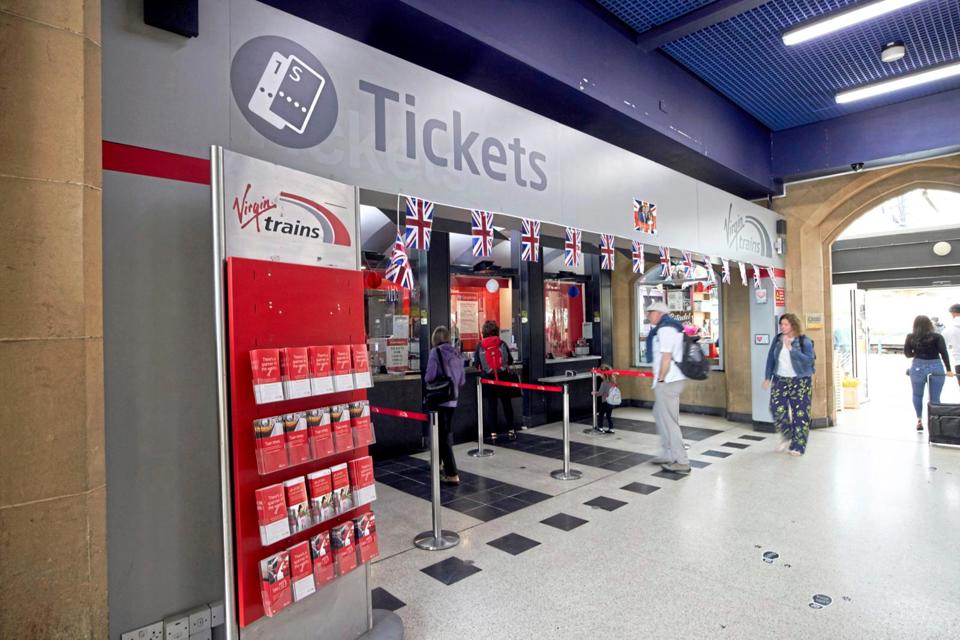

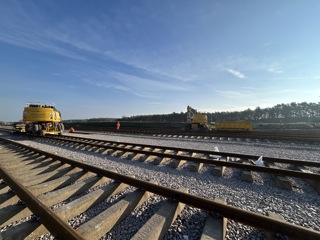
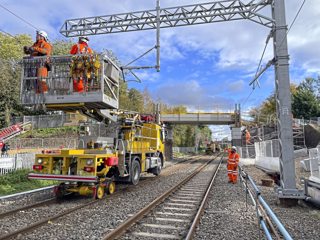
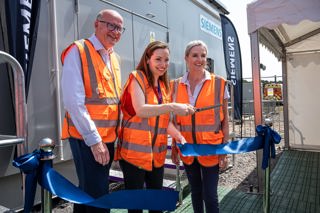
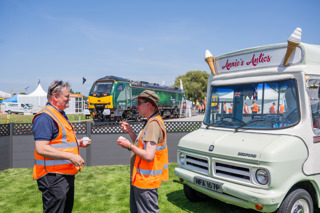
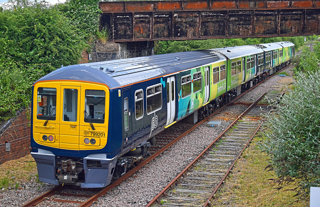











Login to comment
Comments
No comments have been made yet.